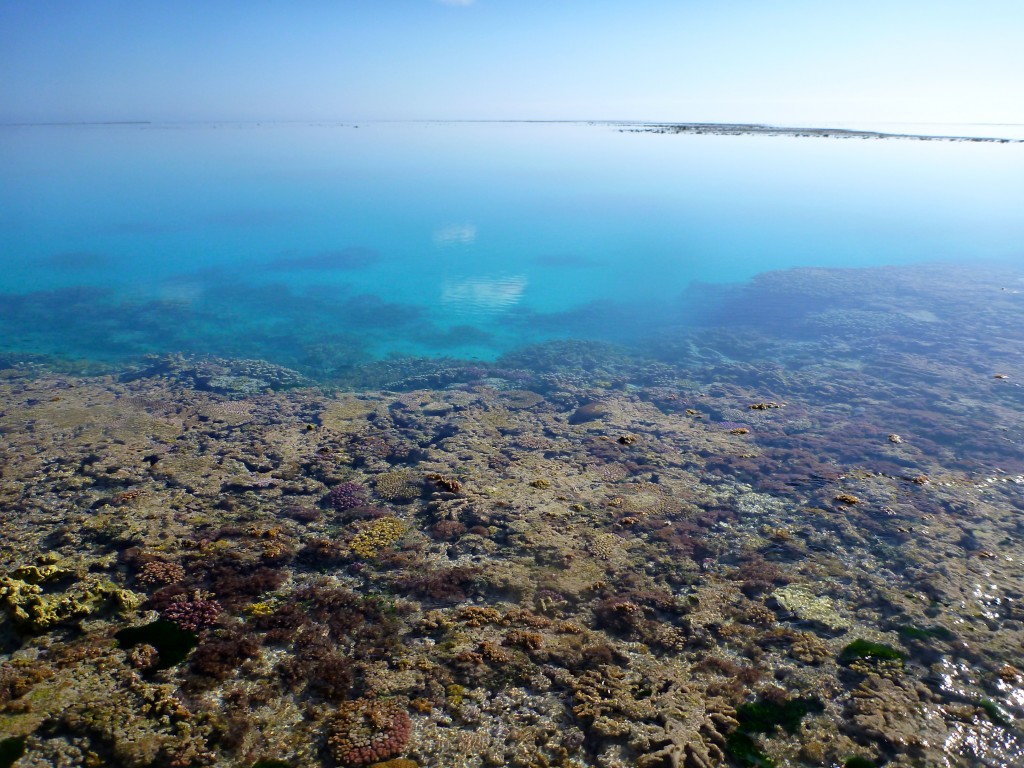
Scientists already knew that corals’ growth rates have slowed in recent years — Ken Caldeira, one of the scientists who led Wednesday’s study, also led previous research which found that corals were growing 40 percent slower in 2008 and 2009 than they had in 1975 and 1976. But until Wednesday’s study, it wasn’t clear how much of that slowdown in growth could be attributed to ocean acidification, and how much was due to factors such as pollution and overfishing. Wednesday’s study, which is also the first to show coral growth under pre-industrial conditions in a natural ecosystem — rather than in a lab or aquarium — provides evidence that acidifying water is what’s to blame for this slowdown in growth.
That’s bad news for coral, because as oceans get more and more acidic, coral could begin to dissolve faster than it can be rebuilt, Caldeira, senior scientist at the Carnegie Institution of Science, told ThinkProgress.
“The reef is constantly growing, but at the same time there are parrotfish chewing on it, and different organisms which balance the growth and loss of the coral reef,” he said. “The projections are that as you go into the future, if you continue current emissions trends, the amount of growth [the reefs] put in each day won’t be able to keep up with dissolution of the reefs, and reefs will start losing mass and eventually disappear.”
Right now, the oceans still have the right chemistry to facilitate coral growth, though as the study shows, that chemistry is changing. If humanity doesn’t drastically reduce carbon emissions, the oceans will become more and more inhospitable for coral growth.
“As the ocean becomes acidic, the tendency to produce these skeletons goes down,” Caldeira said. Eventually, “there will be no place left in the ocean with the kind of chemistry that supports coral growth. Basically things are looking kind of dim for coral reefs unless we have a real turnabout in how we think of energy system.”
Slowed growth rates are just one of the impacts corals are facing from warming and increasingly acidic oceans. As ocean temperatures rise, corals are also susceptible to bleaching, a process in which stressed corals expel the algae living in their tissues and turn white. These bleached corals are more susceptible to death than corals that haven’t expelled their algae. Right now, the world’s coral reefs are experiencing the longest global bleaching event in history, which is being sustained by global warming and El Niño. Other stressors, such as ocean acidification and marine pollution, can compound a coral’s response to too-high temperatures: an already-stressed coral can be susceptible to bleaching at lower temperatures than a healthy coral.
Things are looking kind of dim for coral reefs unless we have a real turnabout in how we think of energy system
Coral reefs support a huge array of species: according to NOAA, reefs are home to more than 800 coral species and 4,000 species of fish. More than 25 percent of global fish biodiversity is associated with coral reefs, meaning that these fish species spend part or all of their lives in reefs. Coral reefs also act as buffers for shorelines — one report found that reefs reduced wave energy by an average of 97 percent, protecting shorelines from major waves and storm surges that are becoming more common as the earth warms.
So protecting coral from climate change and ocean acidification is crucial. But humanity isn’t faced with many options to do so. Since reefs are subject to multiple stressors, tackling things like overfishing — especially of key reef species like parrotfish and urchins — as well as coastal pollution will help reefs become more resilient to changes in climate and CO2 levels, but it won’t protect reefs completely. And pumping an alkaline solution onto reefs in an effort to balance pH levels isn’t practical on a large scale, though Caldeira said that it could work to preserve corals in a marine parks, especially if those parks are located in bays or other partially-enclosed areas. The only real way to preserve coral ecosystems is to drastically cut carbon emissions.
“The Paris agreement, especially if people abide by their commitments, is a good first step,” Caldeira said. “But if we’re serious about protecting the natural environment, cuts in emissions need to be much deeper and come much more quickly.”